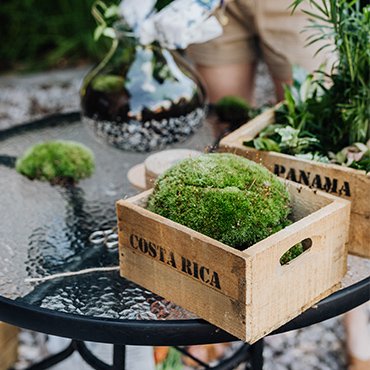Uncategorized
Sustainable Cannabis Cultivation: Best Practices for 2025
The cannabis industry is at a crossroads, with environmental sustainability becoming a top priority for cultivators, consumers, and regulators alike. As we move into 2025, eco-friendly cannabis farming is no longer just a niche trend—it’s a necessity. With increasing scrutiny on water usage, energy consumption, and pesticide reliance, adopting sustainable cannabis practices is critical for long-term viability. This guide explores the latest green cannabis industry trends, delves into organic cannabis cultivation methods, and highlights the most effective sustainable marijuana growing techniques to help cultivators reduce their environmental footprint while maximizing yield and quality.
The Urgency of Sustainable Cannabis Cultivation
The cannabis industry has historically been resource-intensive, with indoor grows consuming vast amounts of electricity and water. However, as climate change accelerates and regulations tighten, the push for eco-friendly cannabis farming has never been stronger. Studies show that indoor cannabis cultivation accounts for nearly 1% of total U.S. electricity usage—a staggering figure that underscores the need for change.
Beyond energy, water scarcity is another pressing issue. Traditional cannabis farming can require up to six gallons of water per plant per day, straining local ecosystems. Additionally, synthetic pesticides and fertilizers contribute to soil degradation and water pollution. The shift toward sustainable cannabis practices is not just about compliance—it’s about ensuring the industry’s future by minimizing environmental harm.
Key Green Cannabis Industry Trends for 2025
Several green cannabis industry trends are shaping cultivation methods in 2025, driven by technological advancements and consumer demand for cleaner, greener products. One of the most significant trends is the rise of regenerative agriculture, which focuses on restoring soil health, sequestering carbon, and enhancing biodiversity. Unlike conventional farming, regenerative techniques prioritize long-term ecosystem balance over short-term yields.
Another major trend is the adoption of renewable energy in cannabis operations. Solar-powered greenhouses, wind energy integrations, and LED lighting systems are becoming standard among forward-thinking growers. These innovations not only reduce carbon footprints but also lower operational costs over time.
Water conservation is also gaining traction, with advanced irrigation systems like drip lines and rainwater harvesting minimizing waste. Some cultivators are even experimenting with hydroponic and aquaponic systems, which use up to 90% less water than traditional soil farming.
Organic Cannabis Cultivation: Methods and Benefits
For many consumers, organic cannabis cultivation is non-negotiable. Pesticide-free, chemical-free cannabis is not only better for the environment but also produces cleaner, more potent flower. In 2025, certified organic cannabis is expected to dominate premium markets, pushing growers to adopt natural pest control methods like companion planting and beneficial insects.
Composting is another cornerstone of organic growing. By recycling plant waste into nutrient-rich compost, cultivators can create a closed-loop system that reduces reliance on synthetic fertilizers. Additionally, no-till farming—a method that avoids soil disruption—helps preserve microbial life and prevent erosion.
The benefits of organic cultivation extend beyond sustainability. Many connoisseurs argue that organically grown cannabis offers superior flavor and aroma, as synthetic nutrients can alter terpene profiles. As demand for clean, high-quality cannabis rises, organic cannabis cultivation will likely become the gold standard.
Innovative Sustainable Marijuana Growing Techniques
The most progressive cultivators are embracing cutting-edge sustainable marijuana growing techniques to stay ahead of the curve. One such method is vertical farming, which maximizes space efficiency by stacking grow layers vertically. This approach not only reduces land use but also allows for precise climate control, lowering energy consumption.
Another breakthrough is the use of mycorrhizal fungi, which form symbiotic relationships with plant roots. These fungi enhance nutrient uptake, reducing the need for fertilizers while improving plant resilience. Similarly, biochar—a charcoal-like substance—is gaining popularity as a soil amendment for its ability to retain water and sequester carbon.
Some growers are even exploring carbon-negative cultivation by integrating agroforestry techniques. By planting cannabis alongside trees and other perennial crops, farms can offset emissions while promoting biodiversity.
The Role of Technology in Eco-Friendly Cannabis Farming
Technology is playing a pivotal role in advancing eco-friendly cannabis farming. AI-driven monitoring systems now allow growers to track energy use, humidity, and soil conditions in real time, optimizing resource allocation. Automated irrigation systems with moisture sensors ensure plants receive just the right amount of water, eliminating waste.
Blockchain is another game-changer, enabling transparent supply chains from seed to sale. Consumers can verify a product’s sustainability claims by scanning QR codes that detail cultivation methods, energy sources, and carbon footprints.
Perhaps most exciting is the development of biodegradable cannabis packaging. Traditional plastic containers are being replaced with hemp-based plastics, mushroom-derived materials, and even edible packaging—aligning with the zero-waste movement.
Challenges and Solutions in Sustainable Cultivation
Despite the progress, challenges remain in scaling sustainable cannabis practices. High upfront costs for renewable energy systems and organic certifications can deter small farmers. However, government grants and industry partnerships are emerging to alleviate financial barriers.
Another hurdle is the lack of standardized sustainability metrics. Without uniform regulations, “greenwashing” remains a risk. Organizations like the Cannabis Sustainability Workgroup are working to establish benchmarks, but widespread adoption will take time.
Education is also critical. Many legacy growers are accustomed to traditional methods and may resist change. Workshops, online courses, and peer-to-peer knowledge sharing can help bridge the gap, ensuring all cultivators can participate in the green transition.
FAQs About Sustainable Cannabis Cultivation
1. Is organic cannabis more expensive to produce?
Initially, yes—organic certifications and natural inputs can raise costs. However, long-term savings from reduced water and energy use often offset these expenses.
2. Can indoor grows be sustainable?
Absolutely. By using LED lights, renewable energy, and closed-loop hydroponics, indoor facilities can drastically cut their environmental impact.
3. What’s the most water-efficient growing method?
Hydroponics and aeroponics use the least water, but rainwater harvesting in outdoor grows is also highly efficient.
4. How can consumers support sustainable cannabis?
Look for brands with third-party sustainability certifications, transparent sourcing, and eco-friendly packaging.
The Future of Eco-Friendly Cannabis Farming
As we look to 2025 and beyond, eco-friendly cannabis farming will define the industry’s leaders. Consumers are increasingly voting with their wallets, favoring brands that prioritize the planet. Regulations will likely tighten, rewarding sustainable operators and penalizing wasteful ones.
The transition won’t happen overnight, but each innovation—from solar-powered greenhouses to mycorrhizal fungi—brings us closer to a truly green cannabis industry. By embracing sustainable marijuana growing techniques today, cultivators can future-proof their businesses while protecting the environment for generations to come.
For the latest insights on organic cannabis cultivation and green cannabis industry trends, stay tuned to Pureherbalessence—your trusted guide to sustainable cannabis.

